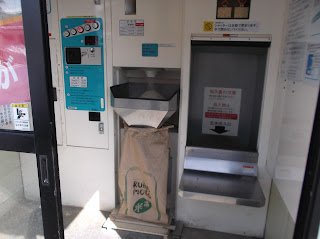I was a "cook out of necessity" and now I am a Saturday/Sunday/holiday cook. I had some work to do today (Sunday).
私は「必要に迫られたコック」でしたが、今では土日・休日のコックです。今日(日曜)はやることがありました。
First, I had to simmer the peels from five or six natsumikan. The flesh was mostly consumed by my wife.
まず、夏みかん5、6個の皮を煮ました。果肉は大半は妻が食べました。
My two small enameled pots are rather small, so I had to simmer the peels in three separate batches, for 10 minutes each. I used paper towels instead of an otoshi buta (drop lid).
私が持っている2つのホウロウ鍋は小さいので、3回に分けて煮ました。それぞれ10分間です。落し蓋の代わりにキッチンペーパーを使いました。
Then, I cut the peels into thin strips.
それから皮を細く切りました。
I tried these three knives (petty knife from Watanabe, Shigefusa nakiri, and Shigefusa kitaeji petty knife). I found the Shigefusa kitaeji petty knife was the best tool for this job.
この3つの包丁(渡辺のペティーナイフ、重房の菜切り、重房の鍛地ペティーナイフ)を試したが、重房の鍛地ペティーナイフがこの作業には一番でした。
I then dried one daikon in the drying net.
それから、大根一本を干し網で干しました。
As part of supper tonight, I made tonkatsu and other types of katsu.
夕飯には豚カツと他の種類のカツを作りました。
More than 800 g pork tenderloin, four slices of ham, eight wiener sausages, one gyoniku (fishmeat) sausage cut into six sticks, and gyoza filling that was sitting in the partial freezing compartment for days.
豚のヒレ肉800 g以上、ハム4切れ、ウインナーソーセージ8本、魚肉ソーセージ一本を6本に切ったもの、何日もパーシャル冷凍室に入っていた餃子の具。
To dust them with flour, I use an I-Wrap bag. The bag contains flour with some salt and pepper.
小麦粉をまぶすのに、アイラップを使っています。このアイラップには小麦粉と塩胡椒を入れてあります。
Put some ingredients in the bag, and shake well to ensure thorough coating.
アイラップに材料を少し入れ、よく振って、まんべんなく粉をつけます。
The remaining flour is mixed with 2 eggs.
残った小麦粉は卵2個と混ぜます。
And, add some water.
そして、水を少し加えます。
I coated all ingredients with egg solution and breaded with panko. The egg solution was almost gone!
材料に全て卵液をつけて、パン粉をつけました。卵液は殆どなくなりました!
All ingredients are ready for deep-frying.
材料は全て揚げる準備ができました。
45 pieces of pork.
豚肉45個
My fryer.
フライヤ。
First I deep-fried the gyoza filling, gyoniku sausage sticks, and wiener sausages.
まずは餃子の具、魚肉ソーセージ、ウインナーを揚げました。
Then, I deep-fried slices of ham.
次に、ハムを揚げました。
The coating was swollen while deep-fried.
揚げている間、衣が膨らみました。
First and second batches of tonkatsu:
一回目、二回目に揚げた豚カツ:
Third and fourth batches of tonkatsu:
3回目、4回目の揚げた豚カツ:
I got this amount of pankon left on the plastic wrap.
ラップにはパン粉がこれだけ残りました。
I deep-fried it, too. See the upper left one.
これも揚げました。左上のを見て下さい。
When I finished all the jobs, it was past five.
全ての仕事を終えると、もう五時を過ぎてました。
I forgot to mention that I also made miso soup with onion, daikon, cabbage, wakame, and enoki, as well as simmered hijiki. As usual, I am a "clean-while-cooking" type.
言い忘れましたが、玉ねぎ、大根、キャベツ、ワカメ、エノキの味噌汁とひじきの煮物も作りました。いつも通り、私は「料理しながら片付ける」タイプです。

















































